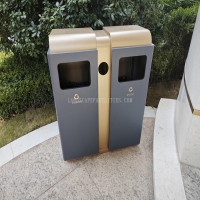Welcome to the website for landscape facilities products and knowledge.
What are the key differences between landscape tables designed for active recreation vs. passive relaxation?
Landscape tables serve distinct purposes depending on whether they are designed for active recreation or passive relaxation. Understanding these differences helps in selecting the right furniture for outdoor spaces.
Active Recreation Tables:
1. Durability: Built to withstand heavy use, often made from robust materials like metal or treated hardwood.
2. Functionality: Designed for group activities, featuring larger surfaces for games, dining, or social gatherings.
3. Placement: Located in high-traffic areas like sports courts, picnic zones, or playgrounds.
4. Accessibility: Often include amenities like attached seating or shade structures for convenience.
Passive Relaxation Tables:
1. Aesthetics: Prioritize visual appeal with natural materials like stone or teak, blending seamlessly into serene environments.
2. Comfort: Designed for solitary or small-group use, with ergonomic seating and calming designs.
3. Placement: Found in quiet zones like gardens, lakesides, or meditation areas.
4. Minimalism: Often simpler in design to avoid distractions, promoting tranquility.
Choosing between these types depends on the intended use and the atmosphere you wish to create in your outdoor space. Active tables foster engagement, while passive ones encourage unwinding.
Related search:

Recommendation
Double-bucket garbage bin, outdoor, metal, multi-color, powder-coated, double-bucket trash can